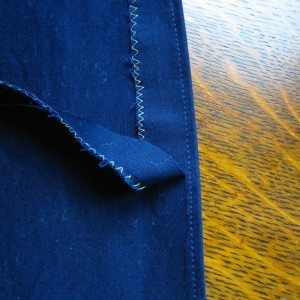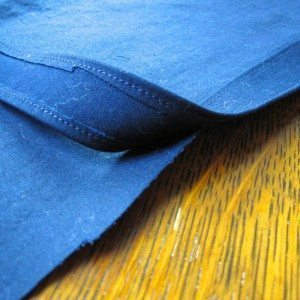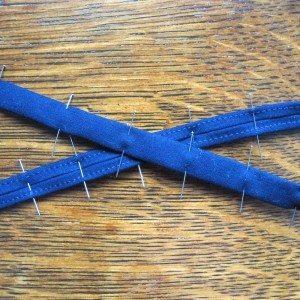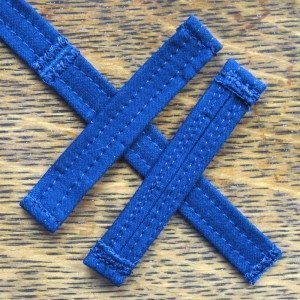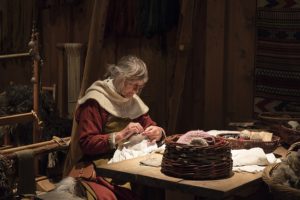 In the last few years I’ve become much more aware of my consumption habits. Until recently this was coupled with a distinct shortage of pocket money, and the combo led me to focus on buying less in all areas of life. Retraining myself to simply want less is part of it – there are a lot of things that I can easily do without, and getting out of the habit of allowing myself the brief acquisition high relaxes its hold on me (I find the same is true of eating sugary things). Serviceable clothing isn’t something I can do without, though.
In the last few years I’ve become much more aware of my consumption habits. Until recently this was coupled with a distinct shortage of pocket money, and the combo led me to focus on buying less in all areas of life. Retraining myself to simply want less is part of it – there are a lot of things that I can easily do without, and getting out of the habit of allowing myself the brief acquisition high relaxes its hold on me (I find the same is true of eating sugary things). Serviceable clothing isn’t something I can do without, though.
There are plenty of pieces of advice for stretching your budget on the shopping side of things. I shop sales and try to anticipate my seasonal needs; I haven’t had much luck with finding my everyday clothes at thrift stores, but I shop there for dressier and costume pieces. Another tip I’ve seen frequently is to choose pieces that all coordinate with each other. I wear v-neck knit shirts and jeans almost every day of the year, with cardigans on top in the winter, so as long as my sweaters coordinate with a wide variety of colors I already have that covered. My spin on that advice is to also avoid really distinctive, noticeable items that I won’t want to wear more than once a month, lest people think I just wear them all the time and never wash them. Dress clothes get a pass, since I am not going to wear those frequently regardless.
The third prong, after reducing quantity and shopping thriftily, is mending. I’ve been trying to determine the cost/benefit ratios of different mends, and here are my thoughts.
Worth It
darning jeans –
Jeans are expensive and machine-darning them is quick. Tears are easier to fix than wear from rubbing, and the mends last longer, but both are worthwhile. Save fabric from dead jeans for later repairs – my husband has a collection of identical jeans and he gets a lot more mileage out of them since I can patch his knee tears with matching fabric so they still look good enough for work. More on this next weekend.
mending bras –
Up to a point, of course. If the fabric or elastic is worn out, doesn’t have the oomph it should, then it’s time to say goodbye. However, if the strap has torn off the band or the underwire is poking out but the material is still good, it’s certainly worth fixing. Again, bras are expensive and the fixes can be quick.
overdying shirts –
Don’t bleach them, because it will thin the fabric, but blah shirts can be revived for a while with an application of dye in a coordinating color. Darkening the fabric not only makes the shirt feel new, it can help thinning shirts be more opaque.
reattaching underwear elastic –
Sometimes the waistband or leg bindings of underwear come loose from the fabric, and it is a quick matter to reattach them with a zigzag stitch, stretching the fabric and elastic while you stitch.
darning sweaters –
For me, sweaters are worth even more than their purchase price, because I have spent a long time finding the ones in my collection. I can’t wear wool sweaters without irritation, and high quality cotton or acrylic sweaters are hard to find. Even though a good mend on a sweater has to be done by hand, it’s worth the time.
replacing coat zippers –
This is typically not as difficult as you might think, and coats are another expensive item. If you have a puffy multi-layer coat the trick is to baste all the layers together maybe half an inch in from the edge of the zipper tape so they stay aligned while you remove and replace the zipper.
Not Worth It
(of course, this is unless it’s an article of clothing that is special to you)
darning socks –
This is a lot of work and most socks aren’t that expensive. I have fixed a lot of socks, but in the future I will only fix the superfancy ones (such as Smartwool), because the amount of time it takes to darn a cheaper sock is worth much more than the amount of time and money it takes to replace the pair. The mends are difficult to make well, also, and can be very noticeable and not very durable.
mending holes in shirts –
I don’t know how to make a mend on the little pinholes that t-shirts develop over time that is not hard, thick, and very obvious. I live with the pinholes until they are too much; fortunately for me that tends to coincide with the overall death of the shirt. I have once or twice taken care of a pinhole by shortening the shirt so it lay in or below the hem, but of course the shirt has to be long enough to allow that.
Maybe, Maybe
replacing jeans zippers –
If the jeans fit well and have good life left in them, and there isn’t a lot of hardware or excess stitching making the zipper replacement trying, then do it. If the jeans aren’t that great or are on their way out, or the replacement process is going to be a lot of labor, I’ll take a pass.
replacing coat linings –
If you love the coat and it’s in good shape on the outside, this is probably worth the effort. This is a LOT of effort, though, so choose carefully.
replacing PJ pant elastic –
Since pajamas don’t get the kind of wear that, say, pants you wear to work do, the fabric often lasts a lot longer than the elastic. The elastic takes wear from machine drying, but also will simply harden with age and get crackly. The reason this is in the “maybe” category is that there are two ways PJ elastic is typically installed: threading through a casing or stitching flat onto the inside of the waistband (generally with many rows of stitching). In the latter case it is probably not worth the effort (though if you have vaguely matching fabric you can cut off the old waistband and make a new one that does thread the elastic through the casing). In the former case, provided the fabric is still good, it probably is worth the effort.
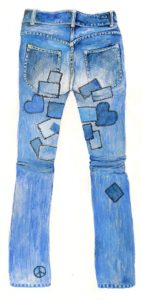 I’ve mended a lot of jeans over the years – my hubby tends to tear a knee out midway through the jeans’ lifespan, and my jeans simply wear thin before I feel like they’re done with this world. Here’s some advice from my experience.
I’ve mended a lot of jeans over the years – my hubby tends to tear a knee out midway through the jeans’ lifespan, and my jeans simply wear thin before I feel like they’re done with this world. Here’s some advice from my experience.
